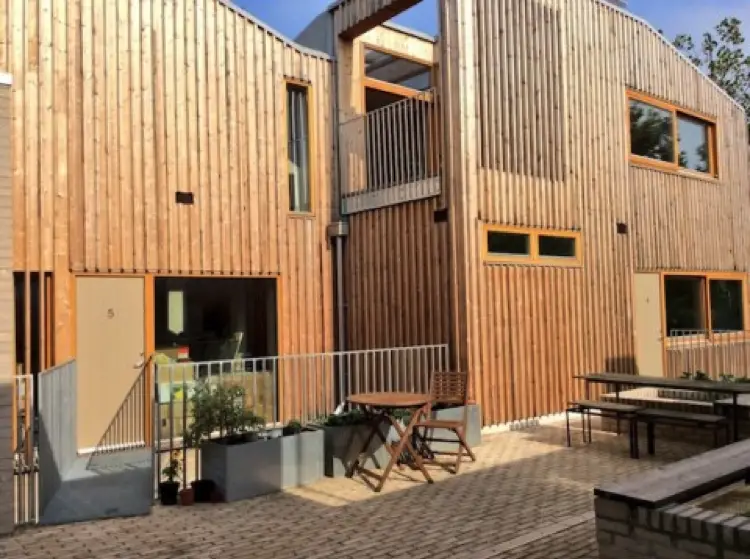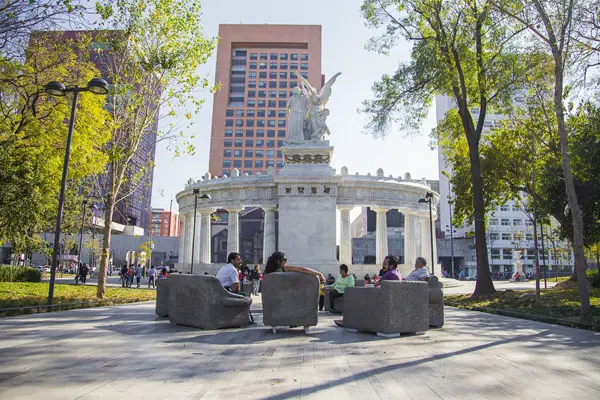In August 2015, CatalyticAction completed the construction of the pilot project ‘Ibtasem’. This project consists of a playground design that questions the definition and necessity of a playground in situations of emergency response. It expands the remit of what is deemed necessary in such urgent conditions. “Within humanitarian responses, programmatically, children often become invisible” (Marc Sommers). [Refugee] children have the right to a safe childhood, an education and to play.
The playground has been designed in response to the large number of Syrian children now living as refugees in Lebanon. Visiting the informal tented settlements in the town of Bar Elias, Lebanon, as well as the schools that have been built to provide education, a main realization was that there was a lack of space solely dedicated to children. A space that would simply allow them to be children, such as a playground!

The innovative process behind this project is not merely in its supply of playing facilities, like swings and slides, but rather in its exploration of opportunities that enable the children to design the playground themselves. The playground has been designed and built with the input of the children since the inception of its idea. Adopting participatory art and architecture in the process prioritizes the children.
“Those promoting participatory action research believe that people have a universal right to participate in the production of knowledge which is a disciplined process of personal and social transformation. In this process, people rupture their existing attitudes of silence, accommodation and passivity, and gain confidence and abilities to alter unjust conditions and structures”. (Paulo Freire, Smith et al, 1997)
Playing is what children do best, so imagine using the act of play in design practices as an empowering tool for communities.

The playground has been built with the help of volunteers who participated in the international Design-Build Workshop Lebanon 2015. The workshop was divided into two phases, with the first one focusing on building the modular structure of the playground, and the second one being more concerned with the playground components and its completion. This allowed for a multicultural and interdisciplinary process.
The children developed a sense of ownership towards the playground. They knew that their role was very important. “I am here to build the playground with you, so when I go back to Syria, I can build one myself” (Shahd, 5 year old).
Here are some on site involvement scenarios that concretize this approach:
- Creating tires seats: We were using the tires to engage the children in active games, such as tire obstacle course, rolling the tires, etc. Later on, we taught the children how to paint the tires, by providing them with several paint colors, brushes and pattern stamps. They painted and designed the tires with their choice of colors and drawings. The last step was to configure the seating area, which happened on the spot, by laying down the tires in a way that would make seating down comfortable.
- Building the climbing net: This happened by explaining to the children how the rope could be used to create a climbing net. The rope was first divided into several dimensions. When the children saw the ropes, each took one and started using them as jump ropes! It was fascinating how they adapted the use of the material. After a jumping session, we taught them how to do a knot with the rope. Then the children assisted the workshop volunteers into setting up the climbing net, one knot at a time.
The playground space is not limited to its pillars, it is rather an exponentiation of what the children make out of it.

CatalyticAction partnered with the basketball freestyle group “Da Move” group, who provided a two days training to the children. This presented a great opportunity for the children to use the playground in a fun and disciplined way. The inauguration day was a celebration of the day all the children were able to play freely in the playground, as well as enjoy a basketball performance by Da Move and the talents and skills of some of the children. Right To Play Lebanon supported the project by donating basketballs, as well as providing training for three of the schoolteachers on how to use play for education, therefore efficiently using the playground space.
The pilot project acted as a catalyst by triggering the awareness for a much-needed space for these children in a time of crisis. Currently, the team of CatalyticAction is in the process of developing future playgrounds with local partners in Lebanon.
Photos: CatalyticAction


